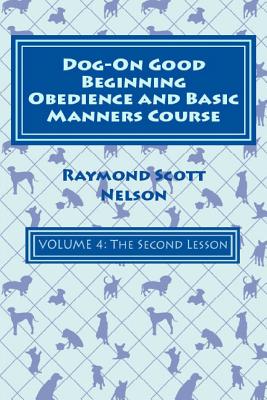
Dog-On Good Beginning Obedience and Basic Manners Course Volume 4: Volume 4: The Second Lesson
Description
Everyone wants a well-trained dog, most people can train, some have the drive and fortitude to follow through, but only a few have the basic knowledge and methods needed to train their dog successfully. If you are a proud owner of an untrained, unruly or "out of control" dog, this simple, easy to follow but effective plan on how to train your dog into enjoyable and pleasant companion will be exactly the help that you need. If you are planning to read just this volume or you intend to read the entire training series, you have already taken the first step necessary to gain this knowledge. The training plan presented in this series of books will not only provide you with the basic knowledge that you need to communicate your wants and desires to your dog, but will also show you how to produce a dog that desires to understand what you want and then one who will voluntarily modify his behavior to please you. Dog-On Good Dog's Beginning Obedience and Basic Manners course provides you with a simple to understand and easy to follow method to train your dog into an enjoyable and pleasant companion. This training course is structured such that you can either go through the entire course from the beginning to end or you can pick and choose the portions of the course that apply to your situation. First, you are given detailed explanations of dog sociology and canine pack mentality, so you will know the "Why" behind your dog's inappropriate behaviors. Then you are presented with a well-rounded training program of incremental training exercises and problem-solving's, so you will know the "How," to change the undesirable behaviors in your dog. The series is divided into sixteen different volumes. Each volume has been published as a separate book. The total course consists of an "Evaluation" book, used to help you narrow down your training needs, eight books of "Lessons," that consist of a series of sequential exercises, and seven "Problem-solving" books that address specific problem areas with which your dog may need some help. In this fourth volume of the Dog-On Good Dog's Beginning Obedience and Basic Manners course you will learn the four exercises that constitute the second Lesson. The first exercise is the "Regiment Heel." In this exercise and you will add enough variation into the "Heel" so that your dog will keep his attention focused upon you ignoring any distracting things around him. You will command your dog to "Heel," then walk with your dog varying the direction with "Left and Right about Faces," the "Left and Right Turns," varying the pace with a "Slow, Medium and Fast Pace" and stopping using the second part of "Automatic Sit." The second exercise is the "Foundation for the Sit Stay." You will teach your dog he should remain in the location and position that you have previously placed him. Your dog will learn to recognize the verbal and hand signal for the "Stay." After giving him the verbal and hand signal for the "Stay, he will learn to voluntarily remain where you have placed him. He will learn that the "Heel" and the "Stay" commands are different and require different responses. The third exercise is the "Long Distance Go-Play/Come. In this exercise, you will teach your dog to "Go Play" within a thirty-foot circular area centered on you. You will teach him that after you have called him to you, he should promptly run over to you and place himself in the "Sit" position in front of you. The fourth exercise is the "Foundation for the Border." It will consist of three exercises that when combined will teach your dog the territorial boundaries of the property. You will teach your dog the location of the imaginary line that will represent the border that you do not want him to cross, you will teach your dog the "Go-Out" command, which will allow your dog to cross the border and, you will teach your dog to cross the border only on the "Go-Out" command and not to cross without the command.

